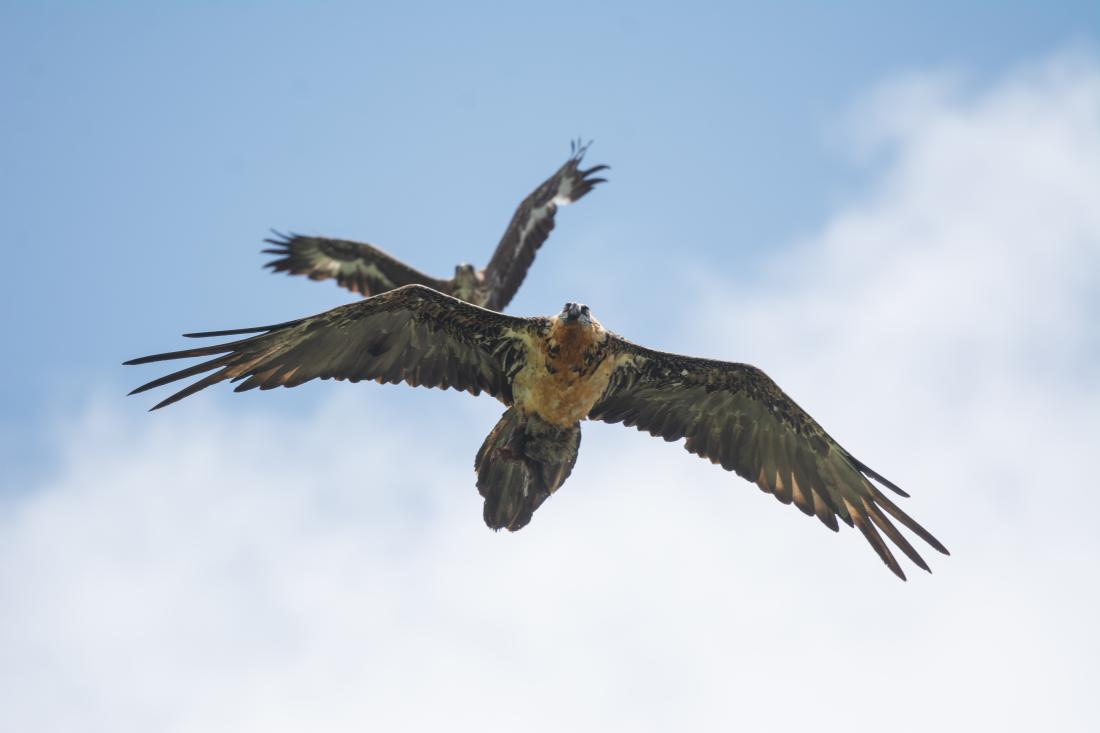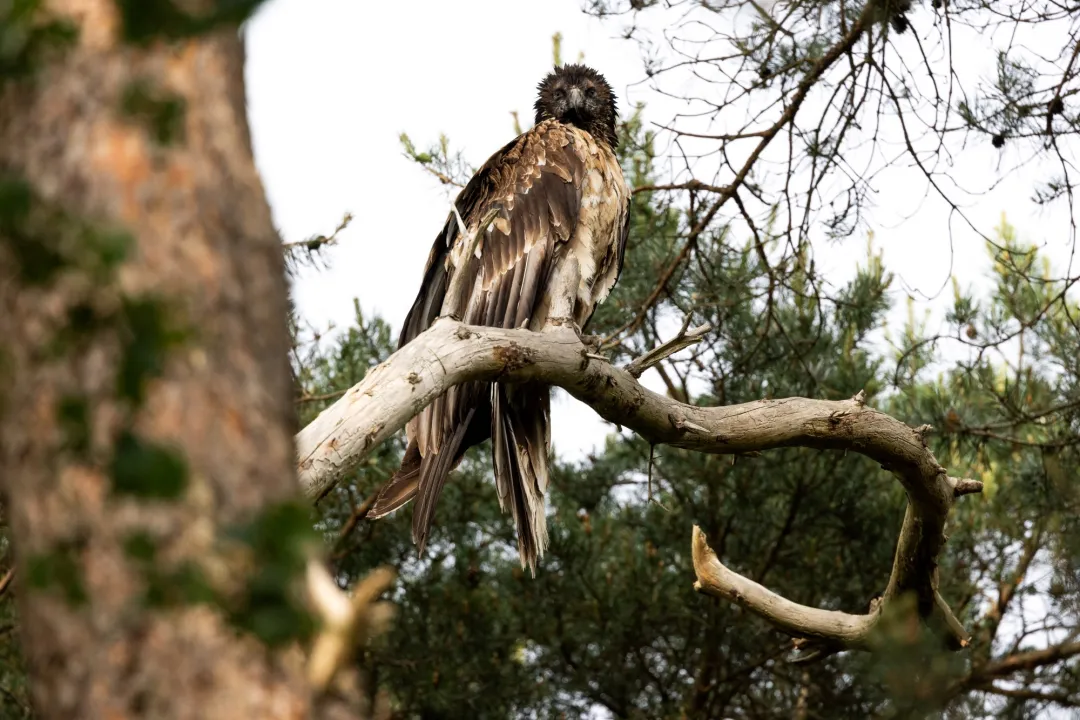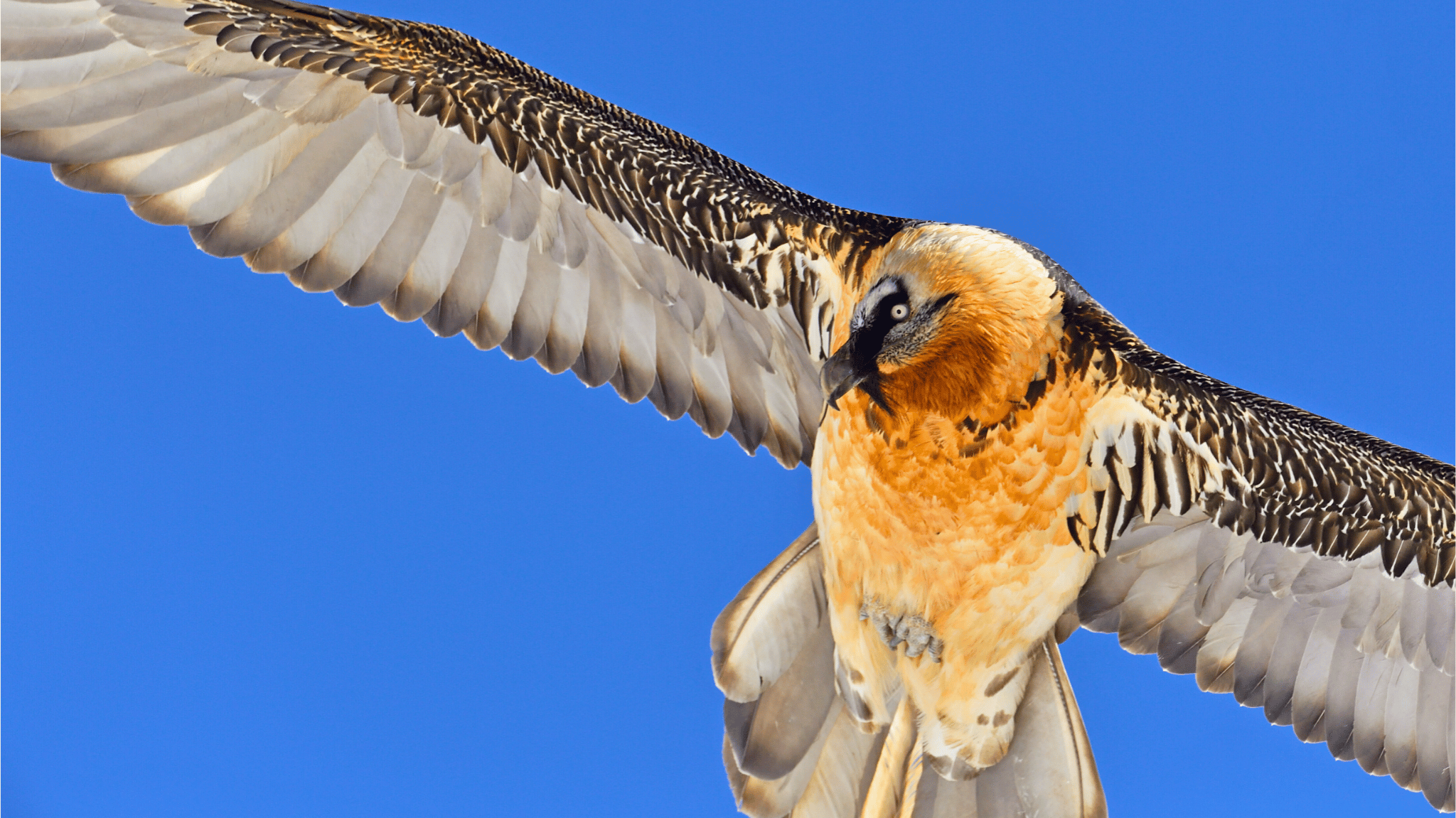The efforts to bring Bearded Vulture (Gypaetus barbatus) back to Granada, Andalucia, reached a thrilling milestone: the first release in Sierra Nevada National Park.
While Dilar and Sulayr, the two Bearded Vultures chicks, started acclimatising to their natural habitat, Sierra Nevada National Park and Junta de Andalucía organised a public event in the municipality of Dilar joined by around 100 children, local authorities, and partners of the reintroduction programme.

Vulture Programmes Manager, during an interview © Jovan Andrevski
A historical moment for Bearded Vultures in Sierra Nevada
On 10 June, two Bearded Vultures chicks were released in the municipality of Dilar, in Sierra Nevada National Park. The release site is at 2,000 meters altitude, in the ideal habitat for the species. The two chicks will spend the next couple of months in an artificial nest built inside a hacking cave provided by the Junta de Andalucía. This will allow them to become familiar with the environment until they are ready to fly on their own.To celebrate this milestone, a public event was held in Dilar on 17 June engaging around 100 children and local community members. Attendees included the Director General of Forestry Policy and Biodiversity of Junta de Andalucía, the Mayor of Dílar, the Director of the Sierra Nevada National Park, and representatives from SEPRONA Environmental Agents and the National Police.
The local wildlife recovery centre carried out workshops and people had the chance to interact with models of scavengers. However, the stars of the event were undoubtedly the children, with their questions and fresh points of view, and the four-month-old visually impaired Bearded Vulture chick. It is, unfortunately, not releasable because of eye damage, and it will not be part of the Bearded Vulture breeding programme. Thanks to its presence, the participants had the opportunity to see a Bearded Vulture up close for the first time, making the day even more memorable.

Dilar and Sulayr, the Bearded Vulture promises
The two freshly released Bearded Vulture chicks are a male and a female.
Dilar, the young male, is from Pyrenean origin, and comes from the breeding centre “La Alfranca” managed by FCQ (Fundación para la Conservación del Quebrantahuesos) in Zaragoza. He was moved to the Bearded Vulture Captive-Breeding Centre of Guadalentín when he was two weeks old, where he was adopted and reared by a Bearded Vulture pair. At the moment of the release, he was 87 days old.
Sulayr is a young female hatched in Tierpark Berlin at the beginning of March. She was moved from Berlin to the Bearded Vulture Captive-Breeding Centre of Guadalentín to get used to the Spanish climate before being released at the age of 93 days.
Before the release, the two birds were equipped with GPS transmitters and identification rings to closely monitor their progress in the wild. In addition, the area surrounding the artificial nest is equipped with camera traps that will film their acclimatization to the wild environment.
The hacking method
Typically, Bearded Vultures raised in captivity are placed in artificial nests in the wild when they reach 90 days, on average. This method, called “the hacking method” mimics what the bird’s parents would do in the wild. Since the chicks at this age are able to thermoregulate on their own, the parents approach the nest only to provide them with food until they are strong enough to dare their first flight. In the case of Dilar and Sulays, and all the other captive-raised Bearded Vultures that are now in the wild, it is the team entrusted with their wellbeing that leaves them food near the nest without directly interacting with the birds.
This method allows the young birds to safely interact with their surroundings. It enhances the birds’ chances of survival and helps them recognise the site as a safe place for breeding. Bearded Vultures usually return to the area where they hatched when they reach sexual maturity and breed, around the age of 8-10 years old. Placing an artificial nest in a carefully selected area of Sierra Nevada National Park will enhance the chances of seeing Bearded Vultures reproduce there in the future

Re-conquering the skies of Andalusia
In 1986, the majestic Bearded Vulture was seen flying in the wild in Andalusia for the last time. Persecution, poisoning, and disturbances at nesting sites drove the species to extinction.
In 1996, the Bearded Vulture reintroduction project in Andalusia started, led by the Junta de Andalucía, Vulture Conservation Foundation (VCF), and the, now former, Fundaciòn Gypaetus. The Bearded Vulture Captive-Breeding Centre of Guadalentín, now one of Europe’s leading facilities for captive breeding, was also established at that time. Today, the centre produces many of the Bearded Vulture chicks that are released in Andalusia and other European projects.
It took ten years to release the first Bearded Vulture in the skies of Andalucia in 2006. Today, thanks to the European Bearded Vulture Captive Breeding programme and the Centre of Guadalentín, Andalusian counts 65 Bearded Vultures released and alive in the wild.
We will remember 2024 as a good year for Bearded Vultures in Andalusia. This year a chick hatched in the wild in Sierra de Castril (near Cazorla) for the first time, from a pair of released birds called Seprona, in honour of the Civil Guards, and Ama, for the environmental agents. Around the same time, Dilar and Sulayr were released in Sierra Nevada.
Sierra Nevada National Park is not new to Bearded Vultures. Several individuals from the reintroduction project in Cazorla have been spending several months in the area. This should not be a surprise. Sierra Nevada is the second largest mountain massif in Andalucia, and the National Park is rich in plant species, wildlife, and livestock. The area has excellent conditions for Bearded Vultures to thrive, including a very large population of Iberian wild goat.
As we wish Dilar and Sulayr the best start on their new life in the wild, we are reminded of the crucial role Bearded Vultures play in their environment. Their massive silhouettes, with wingspans up to 3 meters, are a breathtaking sight we wish to see more often in the skies of Sierra Nevada and Andalucia. We also want to deeply thank the teams that dedicate their daily effort to Bearded Vulture conservation and the reintroduction of the species in Europe.










